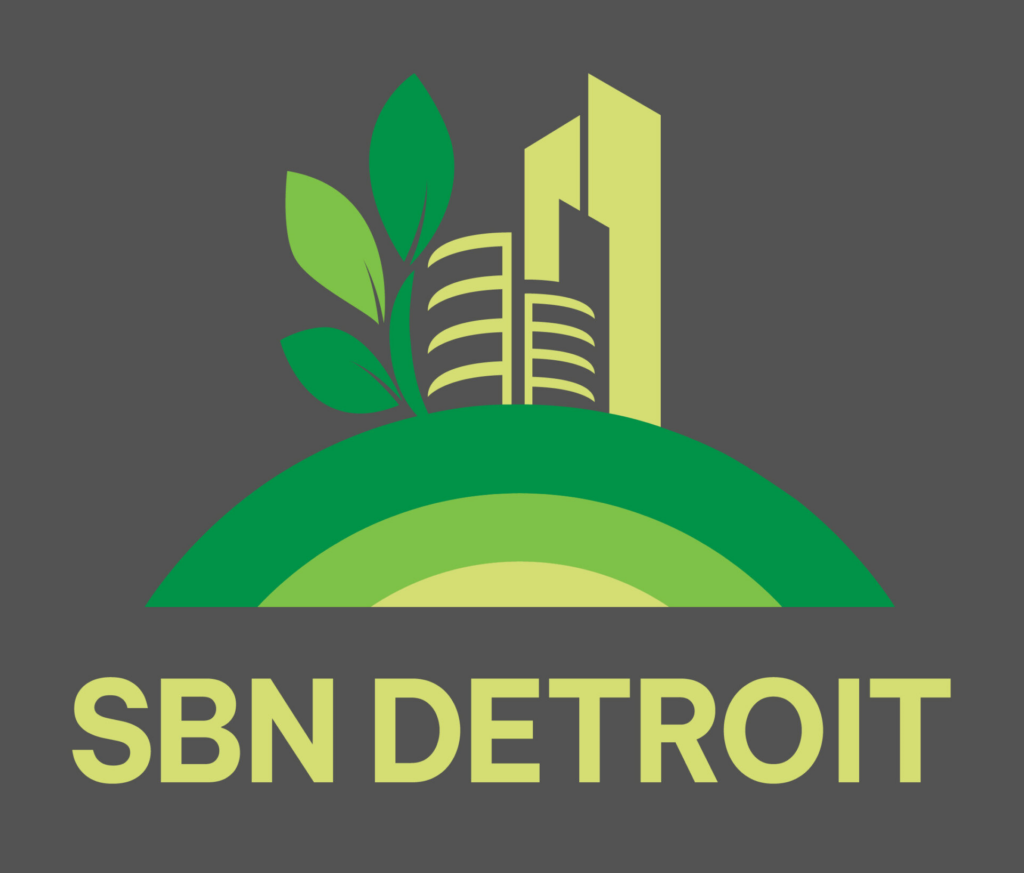How Sesame Solar is Aiming to Build a Mobile Clean Energy Future
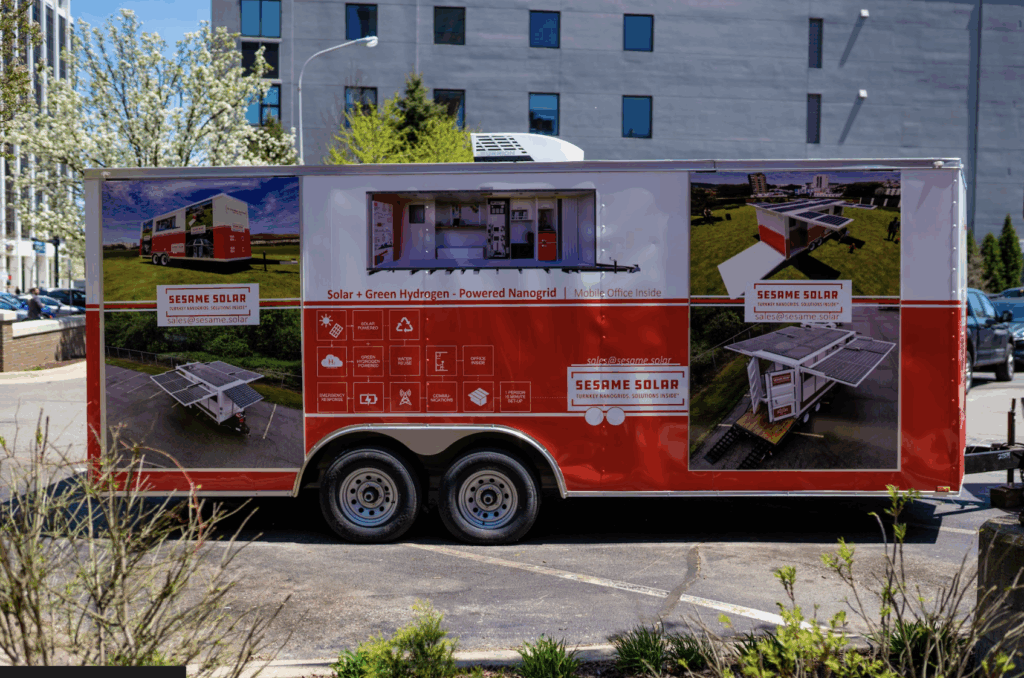
Sesame Solar, based in Jackson, Michigan, is pioneering a new model for clean, mobile power. The company’s self-generating “nanogrids” — compact, solar- and hydrogen-powered units that deploy in minutes — are designed to deliver renewable electricity anywhere it’s needed. From emergency response and telecom operations to defense and community resilience, the technology provides an alternative to the diesel generators that have long powered temporary and remote sites. SBN Detroit interviewed co-founder Lauren Flanagan about redefining energy resilience, the challenges of scaling clean power, and why Michigan is the right place to lead this transformation. Q: Tell me about Sesame Solar — what inspired it, and how did it begin? A: After Hurricane Katrina, it hit me that extreme weather was becoming more frequent and more severe. And it was clear that government alone couldn’t handle the response. Every time disaster struck, I saw diesel generators being deployed to restore power, even though they caused massive environmental damage and logistical problems. That was the “aha” moment. I wanted to create a clean, mobile, self-generating power solution that could replace diesel. Q: How did that vision turn into the nanogrid model you use today? A: We realized that to change behavior, we had to make the better solution easier — something that could be deployed quickly, run cleanly, and adapt to different uses. We created a model that is modular and scalable, like Lego blocks. The nanogrids can power emergency offices, communications systems, field kitchens, drone refueling stations and more. The first units were deployed in the Caribbean after Hurricane Maria (2017), and they’re still operating today. From there, we’ve expanded across the U.S. — our systems are used by cities from Ann Arbor to Santa Barbara, and by telecom companies like Comcast, Cox, and Charter. Q: What kinds of situations demonstrate the greatest need for deployable clean power? A: Disaster recovery is one, of course, but our nanogrids are also being used anywhere grid power is unreliable or unavailable. The Air Force and the Army Corps of Engineers use them for unmanned operations, including surveillance and communications. We’ve also developed hydrogen-powered drone refueling stations with partners like Heven Aerotech. We’re seeing use cases across emergency management, defense, telecommunications, and community resilience — really, any situation where people need dependable, sustainable power quickly. Q: What challenges come with making energy both mobile and self-generating? A: It’s hard. To make something that sets up in 15 minutes and runs off solar and hydrogen, you need deep integration between hardware, software, and automation. We hold multiple patents, and our engineering team has solved challenges around rapid deployment, autonomous energy management, and safety. Every component — from insulation and vapor barriers to passive energy systems — contributes to efficiency. We have a unit deployed with the Army Corps of Engineers that’s been running unmanned for nearly a year with zero downtime. Imagine if a diesel-powered generator was running for that long. And maintenance of the unit consists of blowing sand off the panels twice a year because it’s located in the desert. That’s the level of reliability we’re aiming for. Q: How do you measure the environmental benefits compared to diesel generators? A: We quantify it in CO₂ savings. Our software platform tracks every kilowatt generated and consumed, calculating gallons of diesel avoided and total emissions saved in real time. It’s data our customers can use to validate their sustainability goals. Beyond emissions, diesel generators are noisy, polluting, and often dependent on supply chains that fail during crises. A self-sustaining nanogrid avoids all of that. Q: You moved the company from California to Michigan. Why build here? A: Honestly, I wouldn’t have opened this business in California. Michigan offers lower operating costs, a strong manufacturing base, and deep expertise in mobility and electrification — all areas that align with our long-term vision to make nanogrids more automated. The state has a world-class supply chain. We buy from companies like Alro Steel, we hire engineers locally, and we also source as locally as possible. I like to say we take a farm-to-table approach to manufacturing: how much can we build right here in Michigan? Q: What opportunities does this create for Michigan’s workforce and suppliers? A: We’re growing quickly — we have 23 employees and are hiring more technicians now. The roles require multidisciplinary skills like fabrication, welding, mechanical, and electrical. Increasingly, there are opportunities for advanced computer-assisted and AI-driven roles too. Michigan’s existing fabrication and automotive supply chain is a huge advantage. As that sector transitions toward electrification, it’s opening new opportunities for clean-tech manufacturing to scale. Q: What does the next decade look like as extreme weather becomes more frequent and the energy transition accelerates? A: It’s predicted that we’ll see a significant number of billion-dollar weather events in the next five or six years. Even as we make progress in slowing climate change, we’ll still need to adapt. That’s where mobile, renewably powered systems can come in. They bridge the gap between infrastructure and immediacy — bringing clean energy wherever it’s needed. I’m an optimist. I believe the technology exists to stabilize the climate, but it won’t get easier before it gets better. At Sesame Solar, our mission has always been about people, planet, and profit. It sounds a bit fluffy, but we are working to help communities, companies, and governments prepare for the future — not just by responding to disasters, but by rethinking how we power the world in the first place. Be sure to subscribe to our newsletter for regular updates on sustainable business practices in and around Detroit.
Circular by Design
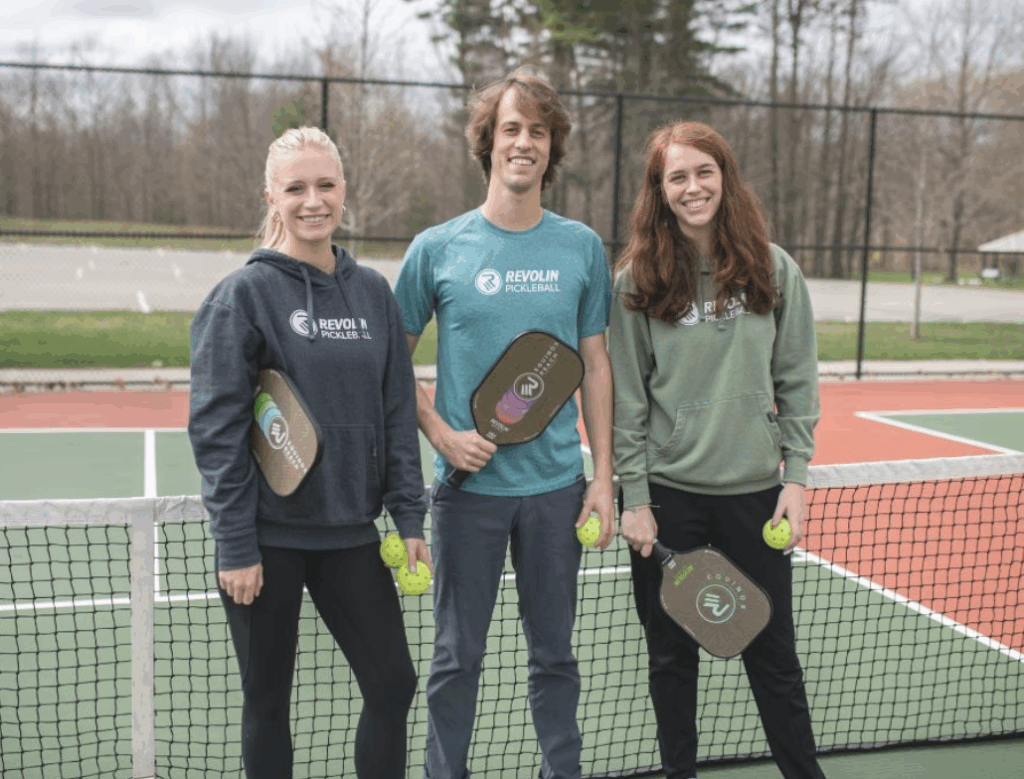
Revolin Sports, a Holland, Michigan-based startup founded by siblings Hugh and Greta Davis, is aiming to change how sports equipment is made — starting with the fastest-growing sport in America: pickleball. The company is using renewable materials, energy-efficient manufacturing, and recyclable design to lower the environmental footprint of high-performance paddles. SBN Detroit interviewed Hugh Davis, cofounder of Revolin Sports, about how sustainable materials, circular manufacturing, and local partnerships are reshaping the future of sporting goods manufacturing in Michigan and beyond. Q: What first motivated you to build a sustainable paddle brand? A: I started playing pickleball in high school and eventually started competing semi-professionally. As a sponsored player, I kept noticing a pattern — paddles were breaking constantly. My friends’ paddles were breaking, too, so I began repairing them in my garage. That side hustle evolved into a deeper curiosity about how to make paddles better. I studied engineering at the University of Michigan, which gave me insight into materials and design, and I realized there was an opportunity to build something higher performing and better for the planet. Ultimately, my vision was to revolutionize equipment by using natural fiber and renewable linens – that’s where the name Revolin comes from. Between 2015 and 2020, my sister and I built and tested a few hundred prototypes, experimenting with new combinations of renewable materials like flax and hemp. Eventually, we landed on a formula that delivered superior performance with less vibration and weight — and dramatically reduced emissions. That became the foundation for Revolin, which we launched in 2020 with the world’s first 98% reduced-emission flax paddle. Q: Most high-performance paddles today use carbon fiber, which has a large carbon footprint. How do you assess and reduce that impact? A: Most paddles are made from carbon fiber or fiberglass, and those materials definitely have value. They’re lightweight, stiff, and durable. But they’re also petroleum-based, energy-intensive to produce, and nearly impossible to recycle. We evaluate each material’s embodied emissions — how much carbon it takes to produce — and calculate the footprint per paddle based on the exact quantities used. Our data shows a 50-75% reduction in greenhouse gas emissions per unit compared to traditional paddles. We also manufacture in the U.S. using primarily U.S.-sourced materials. That reduces transportation emissions and gives us control over our process, from sourcing to final product. Most of our emission reduction comes from our material choices — how we layer and combine them to improve both environmental impact and performance. Q: You use BioFLX™ (hemp/flax composites) and LavaFLX™ technologies. What are those materials, and how did you develop them? A: BioFLX™ refers to our biocomposite made from hemp and flax — two plants that grow tall and fast and contain some of the strongest natural fibers on Earth. We extract, weave, and layer those fibers in specific orientations, then press them together using a low-energy resin system. The result is a lightweight, rigid panel that reduces vibration and is fully recyclable. LavaFLX™ works similarly but uses fibers derived from volcanic rock. The rock is melted, purified, and extruded into filaments thinner than human hair. It’s less energy-intensive to process than carbon fiber and easier to recycle, while offering exceptional power and spin. We also combine the two to create BioFLX™ Plus — a hybrid that balances strength, elasticity, and environmental benefits. We’ve patented how we layer and weave these materials, and we’re already exploring how to use them in other industries like skis, snowboards, and paddleboards. Q: Where do you see the biggest energy or waste inefficiencies in paddle production? A: Two main areas: waste and durability. In traditional sporting goods manufacturing, roughly one-third of materials end up as scrap. A lot of that comes from cutting patterns or using oversized molds. Most of the industry’s production is overseas, so there’s also significant energy and shipping waste. We focus on small-batch production to minimize scrap and leverage leftover material wherever possible. Then there’s product lifespan. Some players go through a dozen paddles a year because they’re not built to last. We design ours for durability — and we are piloting a program to refurbish and recycle paddles at end-of-life. Q: What steps have you taken to make your packaging more sustainable? A: We keep packaging simple and circular. All of it is made from recycled cardboard that’s fully recyclable again. We print with algae-based inks, which have a lower footprint and fewer toxins than petroleum-based inks. And we use minimal packaging — no excess plastic or unnecessary filler. Q: How does your paddle recycling program work? A: We recently launched a pilot program with our Rise paddle, which was designed to be nearly 100% recyclable. Once the grip wrap is removed, we can grind the rest of the paddle and turn it into pellets for injection molding or even filament for 3D printing. Customers who return their paddles get a discount on a new one, and we reuse the material to create other products. The program is still in its beta phase, but we’re collecting paddles and testing processes now. Within the next year or two, we plan to scale it into a full circular system. Q: What are the biggest challenges you face? A: Cost is definitely one. Our materials are unique and sourced from small, innovative suppliers. Building everything in the U.S. adds cost too, but it allows us to control quality, innovate quickly, and maintain transparency. Availability can also be challenging. These materials are newer, niche, and sometimes hard to find in the right weights or thicknesses. Q: How do consumers respond to the higher price point? A: It depends. Some buyers come to us because of sustainability, others because of performance. Once players feel the paddle — the lack of vibration, the control, the extra spin — they recognize the performance value. It’s not just a sustainable paddle; it’s a better paddle. We’ve worked hard to keep pricing competitive without passing our higher costs directly to consumers. And once people learn
Michigan-Founded Tech Company, Motmot
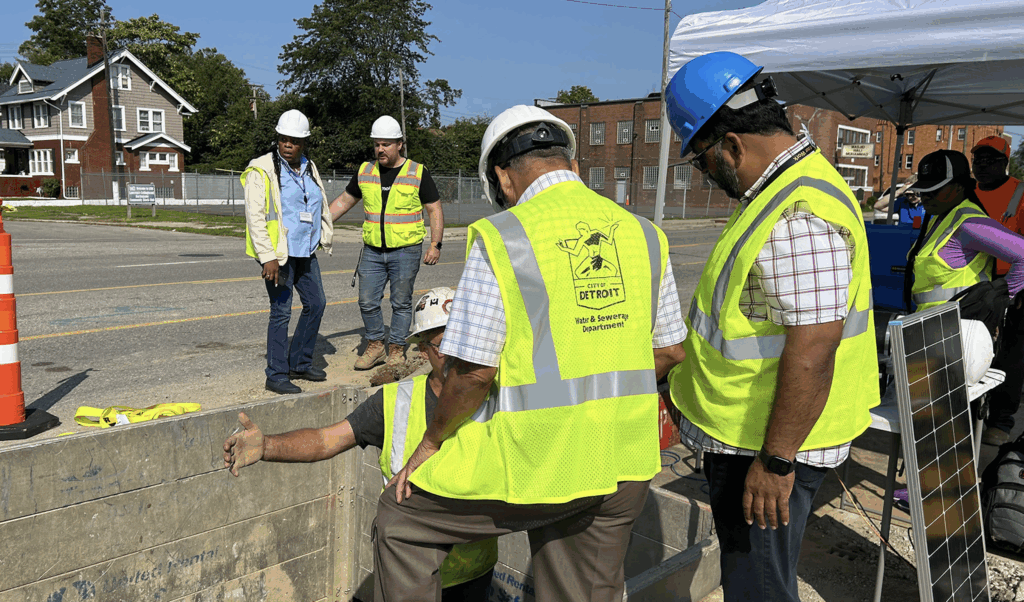
Aging drinking water systems are one of Southeast Michigan’s most pressing infrastructure challenges. Many pipes in the region date back to World War II, built with materials now at the end of their service life. Combined with harsh freeze-thaw cycles and decades of underinvestment, the result is frequent leaks, water main breaks, and costly emergency repairs. Motmot, a startup located in Detroit, is tackling this challenge by deploying robotic technology directly inside live water mains. By providing utilities with condition data they’ve never had before, Motmot aims to shift water infrastructure management from reactive crisis response to proactive planning. SBN Detroit interviewed Elliot Smith, the company’s CEO and Co-Founder, about Southeast Michigan’s unique vulnerabilities, the role of technology in creating more equitable water systems, and how utilities can prepare for the future of smart infrastructure. Q: From your perspective, what makes Southeast Michigan’s drinking water systems especially vulnerable? A: Southeast Michigan has some of the oldest drinking water systems in the country. Much of the pipe was placed around World War II, often using cast iron that is now at the end of its life. Add in our freeze-thaw cycles, which cause pipes to expand and contract, and the risk increases. We also have a history of underinvestment — the goal has long been to replace about 1% of the system per year, but that hasn’t happened consistently. In the Detroit metropolitan area alone, there are 13,000 to 14,000 miles of water main pipe. When one failure occurs, it can cascade into emergency work for other cities connected to the same transmission systems. Q: How does your technology change the timeline for cities and utilities — shifting from reactive maintenance to proactive decision-making? A: Traditionally, utilities only learn about problems once a water main fails. That means flooding, emergency repairs, added operational expenses, and public safety risks. What we’re fighting against is that cycle. Our technology provides data before mains fail. It’s about making the unknowns known and helping cities get ahead of the problem. Q: How do you see technology helping ensure that water system improvements are not only efficient but also equitable? A: Equity starts with visibility. Communities with fewer resources often can’t afford inspections, which means they experience more frequent issues. If we can lower the barrier to entry and make inspections affordable, every community has the chance to see what’s happening in their system. That helps mitigate risk and plan for future projects. At the same time, state revolving funds and stronger datasets can help overburdened communities secure the resources they need. Q: Where is Motmot in development today? A: We’re in the pilot stage now. We’ve kicked off our first pilot with the city of Detroit – I was especially happy that Detroit was the first city to take a chance on us. We are working through the American Water Works Association network. We already have more than 50 communities on our waiting list. That said, we’re being very intentional about not moving too fast. We want safe, effective pilots for every community we work with. My goal is to have 10 pilots started by the end of the year. Q: Beyond financial costs, what are the biggest environmental consequences of undetected water loss? A: Water loss is significant. A leak means residents are paying for water they never actually use. But it’s not just lost water — it’s wasted energy and chemicals as well. That water was treated, pumped, and disinfected before it ever leaked into the ground. In Michigan, reducing water loss directly supports our sustainability goals by conserving Great Lakes water and reducing the energy tied to treatment and pumping. Q: What do you see as the biggest hurdles to widespread adoption of smart water infrastructure? A: Risk perception is one. This is a relatively new technology, and water systems are old and often archaic. The mentality of “if it’s not broke, don’t fix it” is strong — but the truth is, much of the system is broken. We also have to prove our technology won’t contaminate systems or interfere with daily operations. And public works departments are already stretched thin. They’re chasing main breaks and doing emergency repairs, so adding another piece of technology can feel like a burden at first glance. Q: Motmot is entering a highly regulated, risk-averse sector with a disruptive idea. What lessons can other businesses learn from your approach? A: It really comes down to partnerships and credibility. We started incubating at the university level, then built credibility through the American Water Works Association. You have to build trust in the ecosystem — with regulators, utilities, and stakeholders. If you have a big idea, you can’t just drop it into the market. Plant seeds, engage stakeholders, and earn advocates who will vouch for you. Q: What do you see as the next frontier in smart water infrastructure — and how might Michigan businesses and communities prepare? A: Integration. In industries like oil and gas, systems like inspections, billing, and modeling are linked because there’s money to be made in efficiency. In the municipal space, those systems are often siloed. Breaking those silos down — connecting engineering departments, utilities, and technology platforms — is the next frontier. Michigan is well positioned to lead in this. We have a concentration of utilities, strong players like the Great Lakes Water Authority, and research universities investing heavily in this space. If we can integrate and apply technology in practical ways, not just in pilot projects, we can move from innovation theater to real-world results. Q: When you talk with water leaders across the U.S., what pain points come up most often? A: There are three that come up repeatedly. First, aging infrastructure — in some places, water mains date back to the 1840s. Second, visibility. Public works is an underappreciated industry. People see parades and fireworks, but not the crews that make daily life possible. That lack of visibility has led to chronic underinvestment. Third, affordability. This space has
AquaAction Chooses Detroit for U.S. Headquarters
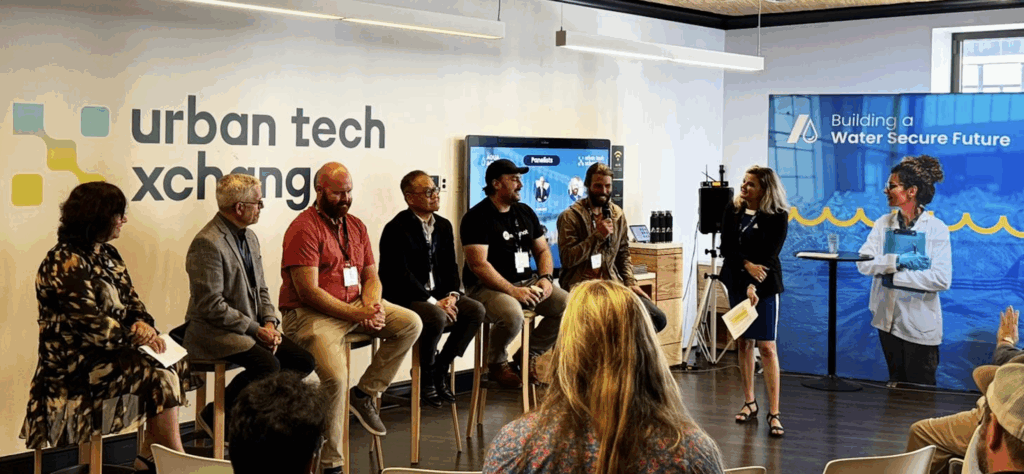
Founded in Canada, AquaAction is a nonprofit dedicated to tackling freshwater challenges through innovation and entrepreneurship. Now, the organization has chosen Detroit as its U.S. headquarters — a choice made because of Southeast Michigan’s role as a steward of the Great Lakes and a launchpad for water-tech solutions with global reach. Through initiatives like the AquaHacking and AquaEntrepreneur programs, AquaAction supports young innovators as they transform ideas into real-world technologies. SBN Detroit interviewed President Soula Chronopoulos about why Detroit was selected, the challenges and opportunities facing the region, and how water-tech could shape the next phase of Southeast Michigan’s economy. Q: What makes Detroit—and Southeast Michigan overall—a compelling region for water-tech innovation and freshwater stewardship? A: There’s a powerful momentum building in Detroit. The city has long been a symbol of resilience and grit, and now it’s fueling a new wave of entrepreneurial energy unlike what we’ve seen in other regions. With freshwater and climate change in the global spotlight, Detroit and Southeast Michigan are uniquely positioned. Sixty percent of the global economy depends on freshwater, and this part of Michigan sits on some of the world’s most critical reserves. The Great Lakes hold 21% of the planet’s freshwater resources, making them both a tremendous asset and a frontline target in the fight against climate change. This region has the chance to build something extraordinary — an economy rooted in water technology that can emerge directly from the Great Lakes. Q: How does AquaAction’s presence here help address regional freshwater challenges versus other parts of North America? A: When we considered where to establish our U.S. base, Detroit quickly stood out. Why? Because this area faces some of the toughest water challenges in the country: Flooding, affordability, pollution, and the legacy of crises like Flint. At the same time, there’s an eagerness here to be part of the solution. Detroit is a real-world test bed. If solutions can work here, they can scale across the U.S. and beyond. That’s why I often say the Midwest — and Detroit in particular — has the potential to become the Silicon Valley of water tech. Q: Can you discuss examples from the AquaHacking and AquaEntrepreneur programs that have particular relevance to Southeast Michigan? A: We ran our first Great Lakes binational challenge in 2023, and the response was incredible. Over 250 people joined, 45 teams were formed, and we launched 10 companies out of Michigan and the Great Lakes region. A few examples stand out: Motmot, based at Newlab, uses underwater robotics to detect leaks in aging water infrastructure. They’ve completed more than 40 projects. Myconaut uses bioengineered mushrooms aiming to remediate contaminated soil and keep lead out of drinking water. They recently won a grant and are testing their technology right here in Michigan. Other ventures include predictive flood modeling tools for cities and digital water management systems — both highly relevant to Southeast Michigan’s infrastructure challenges. In Quebec, similar efforts helped build a $200 million water-tech economy. Imagine what’s possible here. Q: How are young entrepreneurs being supported to translate their water-tech solutions into real-world applications in this region? A: We take a different approach. First, we’re a charity, but we’re also entrepreneurs ourselves. That perspective shapes how we build support for innovators. We’ve created an ecosystem where entrepreneurs can partner with subject-matter experts to validate their solutions. We then connect them with business leaders who help refine their models, open doors, and provide mentorship. Finally, we ensure they get into the field to test and apply their work. In Michigan, we anticipate engaging over 1,000 students and innovators in the coming years. We’re also focusing on communities including those with high unemployment. Q: What are the most pressing water-related challenges Southeast Michigan must address now—and in the coming years? A: Infrastructure is the biggest challenge. Much of it is aging and in need of major investment. Beyond that, flooding, pollution, and overall water management remain pressing concerns. There’s also the question of innovation. Detroit’s history in the automotive industry raises an important question: what comes next? I believe water technology can be the next major economic driver. The region already has supply chains, industrial capacity, and expertise that can be leveraged to build a world-class water-tech sector. Q: What barriers are startups or innovators encountering when bringing solutions to market locally? A: The greatest barrier is awareness. Climate conversations often focus on carbon, while water is overlooked. Yet 60% of the global economy runs on water. It is the lifeblood of everything, but we rarely treat it that way. That said, we’re beginning to see a shift. Policymakers, business leaders, and communities are starting to recognize the true value of water — not just as an environmental concern, but as an economic and security issue. Q: With U.S. headquarters now in Detroit, what kinds of economic or social impacts do you anticipate? A: There are two main areas of impact: Jobs and community. In Canada, we’ve helped create around 400 jobs, and we expect to do the same here. Every time we run an AquaHacking or AquaEntrepreneur program, we typically launch 10–20 companies. That means new businesses, new pilot projects, and new career opportunities. We’ve committed to the MEDC that within 12–18 months, we expect up to 35 new businesses to be launched, several pilot programs to get off the ground and at least 10–12 new staff hired at our Detroit office. Equally important is the community impact. Water is a human right, and it brings people together. We’re cultivating a new generation of innovators who see water not just as a resource but as a foundation for equity, resilience, and growth. Q: How do you envision long-term freshwater security, innovation, and resilience evolving in Southeast Michigan? A: Michigan is at a turning point. Just as it once led in mobility, the state can lead in water — in quality, flood management, pollution control, and technology development. The region has the knowledge, the infrastructure, and the industrial base to
Building Community and Sustainability Through Business
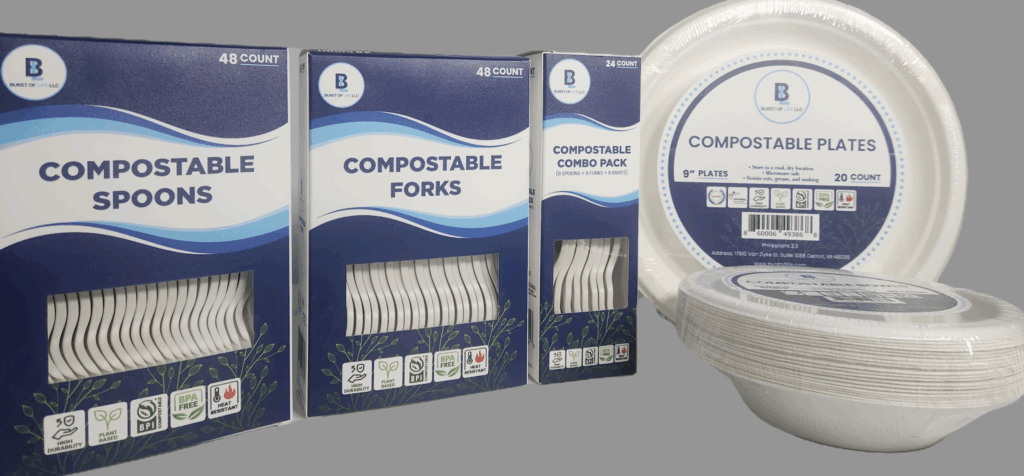
Detroit-based entrepreneur Jarriel Brown is the founder of Burst of Life, a company with a dual mission: Creating good-paying jobs that help build community wealth and producing sustainable, plant-based compostable tableware that reduces environmental impact. For Brown, the business is not only about cutlery and compostables, but about opportunity, equity, and a commitment to Detroit’s future. SBN Detroit sat down with Brown to discuss the origins of Burst of Life, the role sustainability plays in his work, and how local entrepreneurship can spark both economic and environmental change. Q: What personal experience or insight drove the creation of Burst of Life? A: It came in two parts. My military and National Guard service gave me perspective — I traveled around the world and saw certain trends. But it hit home when Trayvon Martin was killed and later during the Flint water crisis. I was part of the response team there, going door to door and seeing people suffering — families of all ages, people who looked like me and people who didn’t. They all lacked control over their environment. As an electrician in the military, I asked my supervisor why we couldn’t do more. He told me we didn’t have the authority. That left me angry and determined. In 2019, I began learning much more about entrepreneurship through Global Empowerment Ministries, and I knew I wanted to create a company that could directly help people who were being overlooked. Burst of Life is my vehicle for that — to create jobs, build wealth, and use philanthropy as a driver for community change. Q: Why sustainability? Why plant-based materials? A: That also came from my time in the field. If we left behind forks or spoons, the environmental team would hold us accountable. It made me think about plastics differently. Later, I learned how plastics affect the body and environment — even contributing to birth defects. So, I decided to make plant-based products instead. Sustainability isn’t just about cutting down on waste; it’s about making healthier choices for people and the planet. I also envision running community cleanup programs — boots on the ground, removing trash, improving water, and land quality. Q: How is the material you use different from bamboo or other options? A: Our products are cornstarch–based. Bamboo is strong, but it can break and sometimes leaves a wood taste with food. Cornstarch offers better heat resistance and durability, while still breaking down naturally. It feels like plastic, but it isn’t plastic. Our utensils can turn to ash like bamboo, without releasing toxins. Q: What challenges have you faced in gaining adoption, especially from larger clients? A: The biggest challenge is size. Larger retailers are used to working with suppliers who can deliver on big orders without much flexibility. Still, I’ve been fortunate — our products are on the shelves at Meijer, Fresh Thyme Market, Zerbo’s, and others. To grow, we’re diversifying. We’ve expanded beyond cutlery into plates, bowls, and combo packs. We’re also targeting restaurants, which is a natural next step. Q: Burst of Life positions itself as more than a product company — it’s a movement. What does sustainability mean to you, and how is it woven into your business model? A: For me, sustainability includes community well-being. I grew up in Detroit and Chicago, where unemployment and crime often went hand in hand. I wanted Burst of Life to do more than sell products. I wanted to create jobs with good wages and benefits, and to hire from the community — including returning citizens and veterans. By helping people build wealth, we can strengthen families and neighborhoods. For me, that’s as important as making eco-friendly products. Q: How quickly do your utensils break down, and what impact does that have on waste in Michigan? A: In industrial composting, our products break down in about ten years — much faster than plastic, which can take hundreds. On a smaller scale, they can be burned safely in a campfire or bonfire, turning to ash without toxic fumes. Q: You’re a certified Minority Business Enterprise (MBE) and Service-Disabled Veteran-Owned Small Business (SDVOSB). How do equity and representation shape your commitments? A: Within the communities and places I’ve traveled to I have seen a lot of poverty, unemployment, and incarceration — realities that have hit African American communities especially hard. Burst of Life is about creating opportunities where they’re needed most. I also focus on hiring veterans. No veteran should be homeless, and jobs are one way to address that. Down the line, I want to create mentorship programs to help others build wealth and stability. It’s about creating a cycle of impact that goes beyond me. Q: Are there local collaborations that have supported your growth? A: Yes, my company began with support from Global Empowerment Ministries in Detroit. Their mentorship helped me understand entrepreneurship as something bigger than personal success. I’m also part of the Veteran Owned Business Roundtable, which connects me with other veteran entrepreneurs. And being part of a network of more than 4,000 entrepreneurs gives me constant support and shared learning. Q: How do you see sustainability practices evolving in Metro Detroit and Southeast Michigan in the next five years? A: My vision is to combine product innovation with direct community action. I’d like to see companies like mine not only offering sustainable products but also leading clean-up efforts and promoting environmental education. Detroit doesn’t always look like Bloomfield Hills — but there’s no reason it can’t. Sustainability is part of that transformation. Q: If you could leave other small businesses in the region with one piece of guidance on building with purpose, what would it be? A: Don’t give up. You’ll hear no a lot, and things won’t always look promising. But you have to believe in your vision more than anyone else does. Be your own biggest supporter. Be sure to subscribe to our newsletter for regular updates on sustainable business practices in and around Detroit.
Ann Arbor’s Climate Strategy
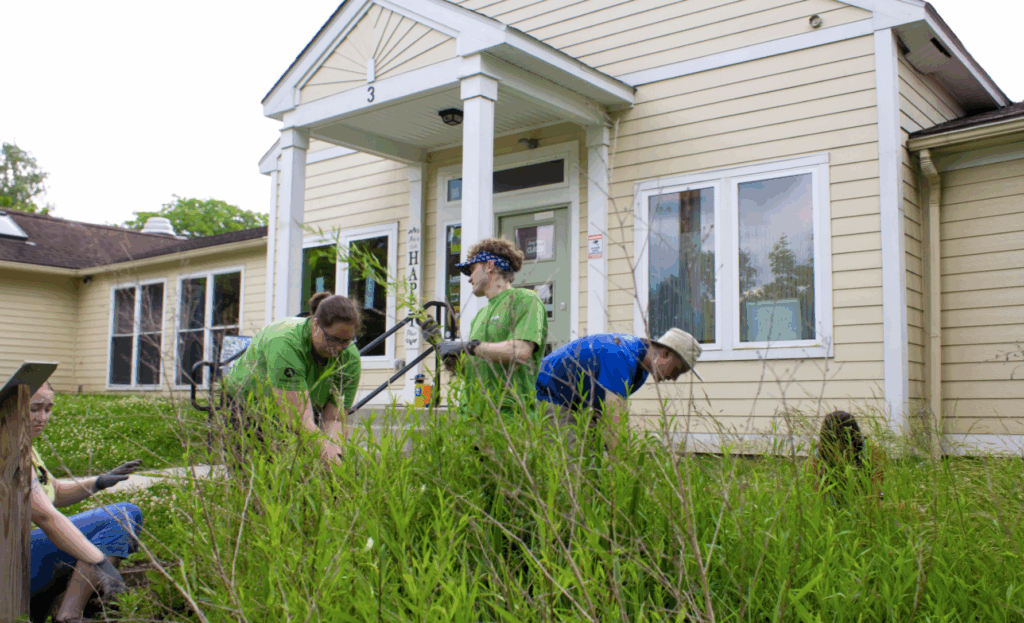
In 2020, the City of Ann Arbor adopted A²ZERO, a climate action strategy designed to achieve community-wide carbon neutrality by 2030. The plan outlines a framework for embedding sustainability into city operations, economic growth, and everyday decision-making, while also emphasizing equity and long-term resilience. One of the most visible efforts under A²ZERO is the Bryant project, a first-of-its-kind initiative to transition an entire neighborhood—home to more than 250 households—toward carbon neutrality. The project combines energy efficiency upgrades, renewable energy, and community-centered planning to create a scalable model for neighborhood-scale decarbonization. Leading the A2ZERO program is Missy Stults, Ann Arbor’s sustainability and innovations director, who helped steer the A²ZERO plan’s rapid development and continues to guide its evolution. SBN Detroit interviewed Stults about how the plan is shaping the local economy, what other cities can learn from Ann Arbor’s approach, and the challenges and opportunities that lie ahead. Q: How is sustainability fueling the local economy in Ann Arbor, and what benefits are you seeing from the A20 plan? A: We’re working to institutionalize sustainability as part of the culture, and we are seeing it manifest in multiple ways. Tech entrepreneurs are innovating around clean energy and mobility. In the circular economy, businesses are repurposing materials or finding second lives for decommissioned electronics—like harvesting valuable parts from old phones. I see this as a movement by which people make choices not just because they’re profitable, but because they’re right, and we’re making them more convenient. Over time, that mindset fuels business innovation and economic resilience. Q: What differentiates A²ZERO from other cities? A: First, the speed. We built this plan in 82 days. Second, we never pretended it would be perfect – we focused on what was possible and necessary. We talk about the planning being a living framework for our work, something that is directional but not the directions for where we need to go. Third, we anchored it in three pillars: equity, sustainability, and transformation. Equity is the center of the work (not just a lens we look through). Sustainability means it must last well beyond any of us. Transformation acknowledges that the systems that created this crisis cannot be the systems that solve it. Lastly, we also didn’t shy away from costs. It would have been easier to gloss over the investments needed, but we were transparent. That honesty has required us to be bold and very vulnerable, and I think that differentiates the Ann Arbor process. Q: How has the strategy evolved since its 2020 adoption? A: Constantly. Telework is a good example. The original plan was written in 2019, just before the pandemic. Telework wasn’t part of it – then suddenly it became central. The plan is directional, and we adapt to cultural, political, and financial moments as they come. Another example is tree planting. Our goal was to plant 10,000 trees later in the plan, but in 2020, we pulled that forward because it was work we could do during the pandemic. We’ve now planted 11,000 trees. That’s the beauty of a living document – It allows us to be nimble while staying aligned to the overall direction. Q: If you could think freely – blue-sky style – what environmental innovation or policy would you love to see Ann Arbor implement next? A: If a flood is happening, the first thing you do is turn off the faucet before you clean up. We need that mindset here. We need building codes and regulations that stop allowing new buildings that pollute. We need aggressive codes that require polluters, such as manufacturers and industrial operators- not individuals – to take responsibility for the pollution they are creating. That kind of systemic shift is essential. Q: What key lessons can other cities learn from the Bryant project? A: The importance of trust. It’s something you can’t underestimate. The community has to determine the end goals. And you have to show up consistently, even when the answers aren’t easy. Early on, people asked, “What if Bryant gentrifies?” We didn’t have an answer – but we said that out loud and committed to figuring it out together. Persistence and vision matter. People need hope, but hope without action is empty. In Bryant, we’ve paired hope with concrete steps – like stabilizing utility bills through energy efficiency improvements- and that sequencing is critical. Now the project has momentum, and we are looking at things like installing networked geothermal. Q: Given recent setbacks—like reduced federal funding and legal barriers—what’s your strategy for sustaining progress? A: Force and persistence. There’s no option but to keep doing this work. Well, the only option is complacency, and that won’t happen. Success begets success. Our goal is to institutionalize sustainability so deeply that it doesn’t matter who is in my role – this will be part of Ann Arbor’s DNA. It’s important to note that local governments have historically had do this without much federal support. The Biden administration was an outlier. We are used to working under challenging conditions, and we will continue regardless. Q: What are some recent wins or innovations? A: In November 2024, voters approved creating the nation’s first sustainable energy utility—an opt-in utility that is supplemental to the existing investor-owned utility, and a utility that only offers energy from renewable energy sources. That’s transformative. In Bryant, we’ve secured $18 million, including a $10 million federal geothermal grant we hope is finalized soon. That would be one of the first large-scale demonstrations of an alternative heating and cooling model in the country. We’re also piloting a circularity initiative with returnable containers, which could scale into broader partnerships. I’ll stop there. There’s much more being done, but these are some good examples of the transformation that’s happening. Q: How are you tracking outcomes? A: We use a mix of metrics. Some update automatically every day into a reporting dashboard we have; others are annual. We’re close to releasing the 2024 annual report. But we also recognize that not everything that matters can
Powering Smarter Battery Futures
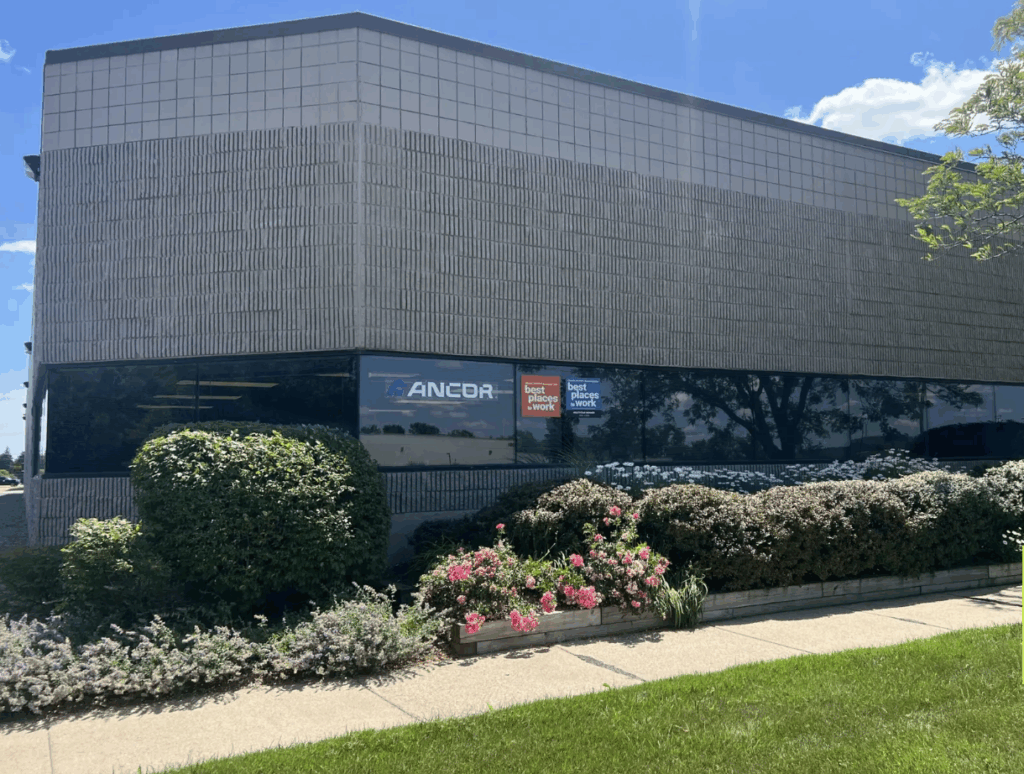
Troy-based Ancor’s roots are in automotive compliance and labeling, but the company has expanded into smart-technology solutions for healthcare, retail, and automotive, including smart battery tracking to stay compliant with local and global regulations. One of its developments is BattCor, a next-generation platform designed to create a real-time “digital twin” of an electric vehicle battery, enabling real-time monitoring, predictive analytics, and improved lifecycle management—from first use through recycling or repurposing. SBN Detroit interviewed CEO Jose L. Flores about the evolution of battery management systems and the challenges and opportunities in electric mobility. Q: Tell us about Ancor Automotive and BattCor. A: Ancor began 50 years ago as a data management and labeling supplier for OEMs. Three years ago, we launched an innovation hub—now our Innovation Solutions Division to expand into tech-forward and sustainable solutions – just as the EV revolution accelerated. We saw a clear gap: while automakers focused on vehicle production, very few addressed battery lifecycle, repurposing, or compliance at scale. BattCor was built to solve that. It’s a digital twin that provides real-time battery health insights and predictive analytics, helping optimize charging, extend lifespan, and even return energy to the grid while consolidating siloed data into unified platform for compliance, sustainability, and better decision-making. BattCor isn’t just a product—it’s how we’re helping organizations future-proof their energy strategies through data-driven decision-making. Q: How is the evolution of battery management systems (BMS) reshaping what’s possible in electric mobility and energy storage? A: The next frontier is taking BMS from reaction to prediction. And this extends well beyond automotive. Once a battery’s primary life in a vehicle is over, it can still serve as stationary storage—for example, in healthcare facilities or other industries with high energy demands. That second life is an untapped opportunity. But there are challenges. Recycling EV batteries is still a complex and not widely understood process. In the EU, for example, regulations already require a minimum percentage of recycled materials—13% recycled cobalt, among other components. To meet that, you need full visibility into a battery’s history and condition. That’s where centralized, accessible data becomes essential. Q: What are the biggest technical or infrastructure challenges in deploying advanced battery systems at scale? A: The first challenge is data chaos. Without integration, insights are either lost or stuck in silos. The second is alignment. We don’t yet have a clear, universal path to compliance, and different stakeholders are moving in different directions. Infrastructure is another question – can the current grid support widespread EV adoption? Are the right regulations in place? Too much of the industry is still operating in silos, and that fragmentation makes it harder to scale sustainable, intelligent solutions. Q: From a sustainability perspective, how can smarter BMS influence circularity and lifecycle efficiency? A: When BMS technology incorporates predictive analytics, it enables smarter charging and discharging behavior, batteries charge more efficiently and avoid unnecessary wear. Smart charging – avoiding constant charging cycles – extends battery life and reduces resource consumption. That’s key for sustainability. The longer we keep batteries in the field, the fewer raw materials we need to extract. Q: How is demand for better battery intelligence changing? A: It’s growing rapidly. From a manufacturer’s standpoint, being able to demonstrate that your batteries last longer and perform better is a strategic differentiator. Effective management not only preserves value for the consumer but also reduces warranty issues and improves brand reputation. Q: What barriers still need to be addressed for mass adoption of advanced BMS platforms? A: Infrastructure is a major barrier. Some cities have robust charging networks, but many don’t. Beyond that, we need the grid to operate as a two-way street—able to receive energy from EVs as well as supply it. What we need now is alignment—not just across tech providers, but across regulators, utilities, and OEMs. The question is: can the rest of the ecosystem move with the same urgency as platforms like BattCor. Q: Battery safety is critical in EVs and aviation. How is the industry shifting its approach? A: Battery anxiety is real. With predictive monitoring, we can catch early warning signs like rising temperatures before they escalate. If parameters are trending toward failure, action can be taken immediately. This proactive approach can dramatically reduce the risk of catastrophic events and improve confidence in the technology. Q: Looking ahead 5–10 years, what’s the most transformational potential of battery intelligence? A: We’ll see an entirely new level of autonomy in how vehicles and buildings manage energy. Imagine a car that decides when to charge based on grid demand, or a building that balances its energy use based on stored battery health. We could see vehicles and the grid collaborating to optimize distribution, reduce strain during peak hours, and even stabilize the system during emergencies. Ultimately, companies will seek unified platforms that can integrate sustainability, compliance, tracking, and predictive analysis in one place. There are players who excel in one or two of those areas, but very few that can bring it all together. That’s where Ancor is focused, and BattCor is our blueprint for that future. We’re not just participating in the next wave of battery innovation. We’re helping lead it. Be sure to subscribe to our newsletter for regular updates on sustainable business practices in and around Detroit.
Electrifying Eastern Market
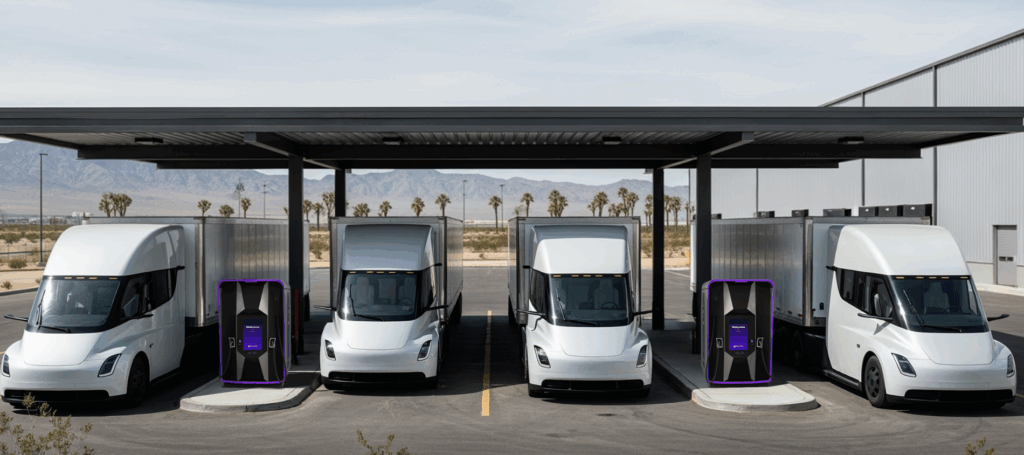
Detroit’s Eastern Market is working to become a national model for integrating freight solutions that reduce fossil fuel use and freight operation costs. San Carlos, Calif.-based ElectricFish, a finalist in the Toyota Mobility Foundation’s Sustainable Cities Challenge, was chosen to build battery-integrated fast chargers to power EVs and provide backup energy for Eastern Market. As one of only three cities worldwide chosen for this challenge, Detroit is using the opportunity to position itself as a leader in transportation innovation, this time in clean mobility. SBN Detroit interviewed ElectricFish co-founder Anurag Kamal about why Eastern Market is the ideal proving ground, what this means for the city’s EV landscape, and how this project could influence urban electrification nationwide. Q: What does Detroit’s selection as a Toyota Mobility Foundation Sustainable Cities Challenge finalist mean for its position in EV and clean mobility? A: Being one of just three cities in the world chosen for this program is an achievement in itself. Detroit has always been a center of automotive innovation, and now we’re seeing a new evolution – from internal combustion to electric. The challenges are complex, especially for medium- and heavy-duty freight vehicles, where electrification requires both cost-effective solutions and robust infrastructure. This project is a way to demonstrate what’s possible and draw attention to Detroit’s potential in leading the shift to sustainable transport. Q: What advantages or challenges does Detroit present for innovating in EV infrastructure? A: Detroit’s biggest advantage is its proximity to the automakers and decision-makers. For startups like ours, having industry leaders see our work firsthand is invaluable. But Detroit is also a challenging test bed – the infrastructure in many areas is outdated and upgrading it can be extremely expensive. In places like Eastern Market, where we’re deploying, the cost to modernize could run into the millions. That’s why we’re proving there’s a different, more cost-effective way to build charging capability that can be replicated in other cities with similar constraints. Q: How does the Toyota Mobility Foundation competition help accelerate innovation? A: Funding is a huge part of it. Detroit secured $3 million for the first phase, with additional funding for companies that advance to later stages. Just as important is the collaboration—talking directly with local businesses, understanding their needs, and identifying unique challenges. For example, a mid-sized fishery in Eastern Market could lose thousands of dollars in product during a four- to six-hour outage caused by infrastructure upgrades. Backup energy solutions become not just a convenience, but a necessity. Q: What does success look like for this project? A: In the short term, success means mid-sized businesses in Eastern Market integrating sustainable practices, whether that’s switching to EVs or having accessible charging infrastructure on-site. For small vendors, it means being able to plug in while working in the market. On September 26, we will launch the first Public Fast Charging Hub at an event that’s open to the public. We’ll be able to demonstrate first-hand how businesses can benefit, and we are hoping to get early adoption. Long term, we want Detroit’s project to be a national case study in rapid, cost-effective urban electrification—something that inspires other cities to follow. Q: What are the biggest gaps you see today in EV charging and fleet electrification? A: Infrastructure is the number one gap. There’s a common perception that switching to electric means changing your entire workflow, parking a vehicle overnight for charging, waiting hours instead of minutes. That’s not sustainable for many businesses. The challenge is not just funding infrastructure but also developing alternative technologies and deployment models that make charging fast, flexible, and accessible. Q: As a startup, how do you decide which innovations to prioritize? A: It’s a constant balancing act. We designed a product with two very fast charging ports that can be deployed almost anywhere. But some customers question the need to pay for faster charging when they don’t see the immediate benefit. Others, like Amazon, request larger-scale systems with eight ports. The key is to stay laser-focused on our mission, move quickly, and avoid overextending into too many variations at once. Q: What lessons have you learned about scaling technology in a rapidly changing industry? A: Flexibility is everything. We’ve seen battery pack prices drop from $200,000 to $60,000 in just three and a half years. Locking into long-term agreements without room to adapt can be costly. We make sure our supply agreements account for technological changes, so we can pivot as new, more cost-effective options emerge. Q: What’s your vision for Detroit’s EV charging landscape in 10 years? A: I think we’ll see significant fleet electrification – possibly 10% adoption or more – along with widespread public and private charging. Places that sell fuel today will likely also serve EV drivers. Home charging will be common for homeowners, but public infrastructure will carry the bulk of the load. If projects like Eastern Market succeed, Detroit could be one of the most compelling examples of how urban EV infrastructure can be built quickly, effectively, and in a way that meets the needs of diverse users. Be sure to subscribe to our newsletter for regular updates on sustainable business practices in and around Detroit.
Building with Purpose
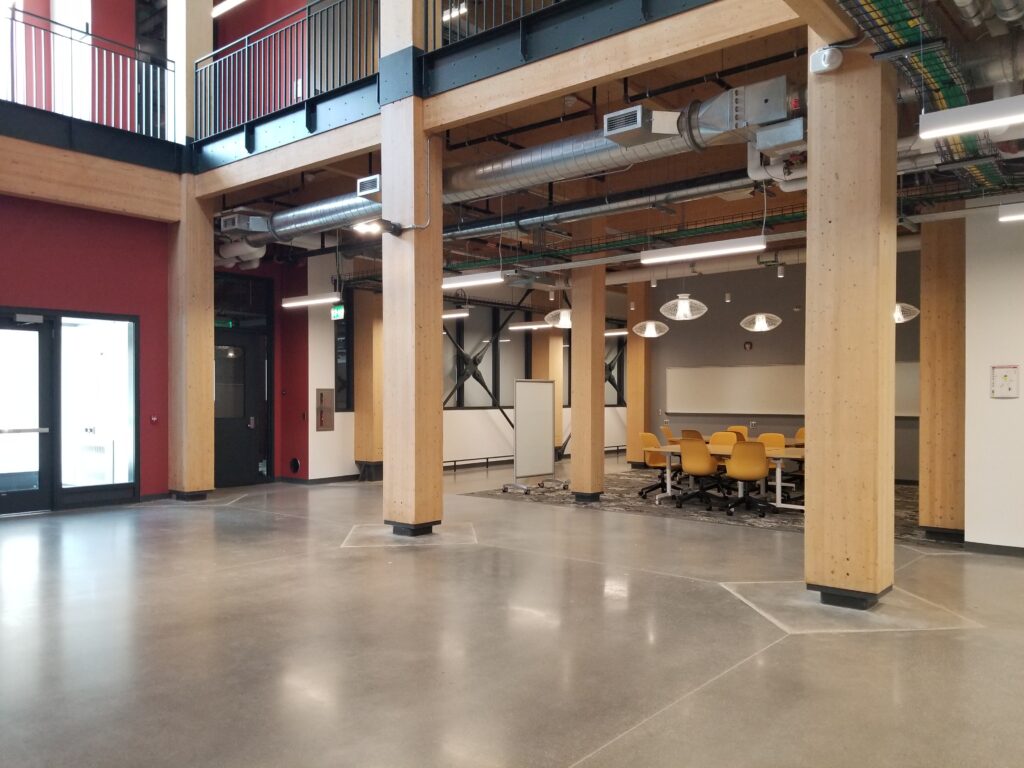
MassTimber@MSU is a cross-disciplinary initiative at Michigan State University dedicated to advancing mass timber construction and manufacturing in Michigan. Collaborating with partners across construction, forestry, development, and state agencies—including the Michigan Department of Natural Resources—the initiative leverages MSU’s land-grant mission through research, teaching, stakeholder engagement, and policy development to build a sustainable mass timber future for the state. SBN Detroit interviewed Sandra Lupien, Director of MassTimber@MSU, about the environmental, economic, and design implications of mass timber and the growing momentum behind the material in Michigan and beyond. Q: What is the MassTimber@MSU initiative, and what inspired its creation? A: MassTimber@MSU is a collaboration across MSU’s School of Planning, Design and Construction, Department of Forestry, and MSU Extension. We work with partners across the state—including construction professionals, foresters, community and development organizations, and state agencies like the Michigan Department of Natural Resources—to advance mass timber construction and manufacturing in Michigan. Our approach reflects MSU’s land-grant mission: research, teaching and curriculum development, stakeholder engagement, and policy exploration that could support mass timber adoption. Since I started in this role in July 2021, momentum is growing. There are now more than 65 mass timber projects in the pipeline in Michigan. The STEM Teaching and Learning Facility on MSU’s campus, which is the second building in the state to use cross-laminated timber (CLT), helped demonstrate what’s possible. And we’re now seeing serious interest from prospective producers who are looking to locate in Michigan. Q: What are the environmental benefits of mass timber in terms of sustainability, carbon reduction, and climate resilience? A: This is exactly what drew me to mass timber. It’s a tool in our toolkit to reduce carbon emissions, support sustainable communities, and help foster healthier, more resilient forests. Globally, the built environment accounts for about 39% of greenhouse gas emissions—28% from building operations and 11% from construction materials like concrete, steel, and glass. These materials are essential, but they’re energy-intensive to produce. Wood, by contrast, is a renewable resource that stores carbon. When we use wood in construction, we’re not only lowering a building’s embodied carbon footprint—we’re also locking that carbon into the structure itself. At MSU, the STEM Teaching and Learning Facility contains roughly 3,000 cubic meters of mass timber, which stores about 1,856 metric tons of carbon dioxide equivalent. That’s comparable to removing the emissions from 4 million miles driven by an average car. Mass timber buildings, in this way, become carbon storage banks. On the forestry side, we know that many forests evolved with low-intensity natural fires that helped maintain healthy densities. Today, many of our forests are overcrowded, which makes them vulnerable to pests, disease, and catastrophic wildfire. Because of past logging practices and fire suppression, we have an obligation—and opportunity—to steward forests more sustainably. When we do that, we can produce wood that extends the climate benefits of trees, especially if that wood would otherwise decay or burn. Q: How are MSU students and faculty engaging with mass timber—from design to research to real-world application? A: There are three main academic areas deeply engaged with mass timber: Construction Management, Forestry and Biochemistry, and Civil and Environmental Engineering. We have undergraduates, master’s students, and Ph.D. candidates working with faculty on projects across those disciplines. In Construction Management, Professor George Berghorn is developing mass timber curriculum modules that can be used nationally in engineering and construction programs. In Forestry, Professor Mojgan Nejad is doing incredible work on developing bio-based adhesives and coatings for use in mass timber—replacing fossil-fuel-based polyurethane with lignin-based alternatives. She’s actively working toward commercialization. We’ve also done economic research to analyze supply chains and survey demand, which helps inform developers and policymakers. And beginning Spring 2025, we launched a new course focused entirely on mass timber, led by Dr. George Berghorn and tailored for both undergraduate and graduate students. Q: From an economic perspective, how could mass timber help revitalize Michigan’s forestry sector and rural economies? A: We’ve modeled the economic impacts of launching a 50,000-cubic-meter-per-year mass timber manufacturing facility in Michigan. The results are exciting: such a facility would contribute $152 million to the state’s GDP and support 318 jobs. There’s a strong need to find new uses for Michigan wood. With the paper industry in decline and other traditional markets shifting, mass timber presents an opportunity to create high-value products that support Michigan jobs and rural economies. Q: How does the initiative align with Michigan’s climate goals or sustainable development strategies statewide? A: The MI Healthy Climate Plan, which outlines the state’s climate goals, directly mentions mass timber three times—as a key strategy for reducing emissions in the built environment and managing natural lands sustainably. The City of Lansing’s Sustainability Action Plan also highlights mass timber, and East Lansing has even amended its zoning ordinance to incentivize developers to use mass timber and build LEED-certified projects. It’s encouraging to see this kind of policy support—it sends a signal that mass timber can and should be part of Michigan’s climate solution. Q: What does Michigan’s existing forest resource look like, and how does sustainable forestry tie into your vision? A: Healthy, resilient forests are the foundation of everything we do. In Michigan, about 70% of our forest resource is hardwood and 30% is softwood. Most mass timber products currently certified for use in the U.S. are made from softwoods. That said, Michigan does have suitable softwood species. For example, red pine was certified for structural use because the Michigan DNR prioritized using Michigan wood in a customer service building in the Upper Peninsula. That’s a great example of state leadership driving local wood utilization. As the industry evolves, there’s potential to expand the species we can use in mass timber production. Q: Looking ahead five to ten years, what’s your boldest vision for the impact of the Mass Timber Initiative? A: I’d like to see commercial buildings—everything from multifamily housing to community centers to industrial facilities—considering mass timber from the outset, not as a novelty but as a viable, mainstream option. Mass timber
Identifying Opportunities for Improved Efficiencies

The Energy Alliance Group of North America focuses on helping businesses implement sustainable energy solutions by identifying opportunities for improved efficiency and connecting clients to funding and technology. Based in Ann Arbor, Michigan, the company collaborates with commercial and industrial property managers to reduce energy consumption, enhance operations, and achieve long-term cost savings. SBN Detroit interviewed Scott Ringlein, founder, principal, and Chief Strategy Officer, about energy efficiency in Southeast Michigan, the role of financing and audits, and the importance of long-term thinking when it comes to sustainability. Q: What are the biggest energy efficiency challenges facing commercial and industrial buildings in Southeast Michigan? A: Misinformation is one of the biggest challenges. Every building has the opportunity to implement energy efficiency improvements, and there is money available to make it happen. These improvements offer a return on investment, but many building operators and owners either don’t believe the numbers or assume they don’t apply to them. The truth is, utility costs are ongoing and only getting higher, so the only way to gain control is to improve your building’s efficiency. Q: How can businesses identify when it’s time to upgrade or retrofit their energy systems A: Start by knowing what you have—what systems are in place, their expected lifespan, and their maintenance history. If you’re seeing frequent repairs and higher maintenance costs, it’s time to look at alternatives. Then evaluate how much more efficient a new system could be and what kind of energy savings it could deliver. If the numbers make sense, that’s the signal to move forward. Unfortunately, many businesses struggle with that last step—deciding to invest. Q: What misconceptions do you commonly encounter around cost recovery or energy savings? A: Many building owners don’t believe the projections—even when we show them data that supports a positive cash flow within one or two years. They tend to focus solely on ROI and forget that utilities never go away. You’re always going to pay for water, electricity, gas—whatever it is. And the utility companies have no vested interest in lowering your costs. So even if you’re skeptical, you’re still going to be paying more year after year unless you act. Q: How has the financing landscape changed for energy upgrades—especially for nonprofits or small businesses? A: We’ve been in this space since 2012, and the financing options today are better than they’ve ever been. Tax credits will come and go, but there are more long-term tools now than there were a decade ago. Michigan has been a leader in this area. Programs like Michigan Saves were the first of their kind in the U.S. We’re also a state approved for Property Assessed Clean Energy (PACE) financing, although it’s underutilized here compared to states like California. Still, the options are out there—you have choices, and you can take control. Q: What role do energy audits play in long-term planning, and how often should they be conducted? A: Audits are essential. You need to know where you stand—what equipment you have, how efficient it is, and what condition it’s in. It’s surprising how many clients have never even been on their own roof, where all the major equipment is housed. There are different levels of audits. A Level 1 audit gives you a basic understanding of what you have and where you’re spending your money. A Level 3 audit goes deeper and is useful when you’re preparing to make major decisions—like process changes or equipment replacement. A challenge is that many companies don’t take the time for a comprehensive audit until it’s too late. Smaller organizations may lack the staff, and larger ones may lose visibility due to scale. But without that baseline, long-term planning is difficult. Q: How do Southeast Michigan’s climate swings shape energy strategy in the region? A: As an organization, we don’t use climate change as the primary argument for doing the right thing. Climate change is happening, but we believe the conversation around energy efficiency should be happening regardless. You’re spending money on utilities – and there are better systems and more efficient ways to operate. We also need to think long-term. In the U.S., we don’t treat these upgrades as long-term investments the way they do in Europe or Asia. There, the systems are central to the building’s value and are maintained accordingly. Here, we often focus too much on short-term costs instead of building for performance and sustainability. Q: What advice do you have for businesses looking to reduce costs and improve operations going forward? A: Real-time monitoring of building systems from a central location gives you visibility and control. Beyond that, the cost of implementing technologies like LED lighting, heat pumps, solar panels, and combined heat and power (CHP) systems has become very feasible. There are also integrated systems now—solar light poles with battery storage and surveillance, for example—that operate independently of utility companies. The key is maintenance. These systems don’t last forever if they’re neglected. But with built-in monitoring and upkeep, they can be powerful tools for cutting costs and improving resilience. Be sure to subscribe to our newsletter for regular updates on sustainable business practices in and around Detroit.
